- Home
- William H. Keith
Symbionts Page 19
Symbionts Read online
Page 19
“Good luck! Let’s show the DalRiss what Confederation warflyers can do!”
The lounge scene faded, replaced by the darkness of the warflyer launch tube. Green lights showed readiness for launch. Julio’s voice called softly over a private channel. “Luck to you, Lieu. Take out one of them destroyers for me, eh?”
“You got it, Julio.”
“And bring my girl back in one piece, or you ’n’ me’ll have words!”
Van laughed. “Yes, sir!”
“Gold Eagle clear for launch,” Cole announced on the primary tac channel. “Primary sequence. Thrusters to stand by.”
And then Tarazed’s launch officer was counting down the final seconds in Van’s ear. “And four and three and two and one and launch!”
There was a blur of motion, and Van’sGuard was flung outward by a powerful, surging magnetic flux. Stars, and the dazzling glare of Alya A, exploded against Van’s awareness, with Alya A-VI a brilliant star almost dead ahead.
An ice-cold calm descended on Van, clamping down over his emotions, over his impatience and the surging exultation of being in free flight once again. He gave the mental command to fire his primary thruster, and white light exploded behind his head, driving his ship forward. Astern, the five-pearls-on-a-string bulk of the Tarazed dwindled rapidly until it was nothing more than a bright star. Van countered a slight roll to starboard, then fired his ventral and port thrusters to align himself on the rest of the squadron, arrowing now straight down the axis of the Confederation fleet’s course. His Warhawk’s AI painted new stars of red and green on his view of space, showing the positions of the other ships ahead. A silent flare of light there marked the detonation of an Imperial missile.
The battle proper for Alyan space had begun.
Dev relaxed into the tactical command sim, watching the battle unfold. He’d done all that he could at this point, from double-checking the position of each ship in the deployment to that final pep talk to the pilots of the 1st Wing. He hoped the speech had not been too transparent, too obvious in its inspirational flag-waving psychology. More than anything else, he felt that he’d had to say something, to acknowledge the bravery and loyalty of those people who were about to take eighteen-ton singleships up against Yari-class destroyers.
Much was riding on them, and on what they would be able to accomplish against very long odds indeed.
Flashes of light were flaring across his tactical display now. Eagle’s AI identified the flashes as a barrage of EWC-167 nanomunitions, each detonation expanding rapidly into merging, mirror silver clouds composed of trillions of microscopic flecks of crystal.
Cloudscreens, designed to reflect or scatter laser light. The Imperial fleet had ceased acceleration some time ago, so they remained behind the drifting clouds, which would render laser fire useless until they dispersed, or until the combatants were much closer than they were now.
More time passed, the range closed. The Imperials were first to fire, loosing a cloud of teleoperated missiles. At Dev’s command, countermissile fire began picking off the incoming warheads. Then the surviving missiles were close enough that point defense lasers could lock on and fire, vaporizing the swiftly accelerating missiles in soundless blossoms of light.
Computer graphics continued to update the formations arrayed beneath his gaze. Constellation was nearing the closest of the vast, shimmering cloudscreens, traveling stern-first.
“Now!” he ordered, and Constellation’s drive Venturis flared white-hot. Seconds later, their invisible exhaust of high-energy plasma seared into the approaching cloudscreen. The frigate and the two corvettes, meanwhile, accelerated sharply, rapidly overtaking the destroyer. Portions of the screen blackened or wisped away into transparency as Constellation plunged through the cloud, closely followed by Rebel, Valiant, and Audacious.
Dev suspected that the Imperials planned to hit Constellation as soon as she emerged from the cloudscreen; he’d timed it so that all four of the ships in the Confederation vanguard would emerge at once, and at different speeds, a maneuver designed to confound the Japanese fire control AIs.
“Dev?”
Lasers fired, a crisscross of invisible beams of energy made tangible by Eagle’s AI, threads of green and red that instantly identified shooter and target.
“Dev, are you there?”
That was Katya, seeking a conference channel, but Dev ignored her. His worry about how his speech had been received was gone. In its place thundered the familiar, surging exultation of raw power, a victorious affirmation of triumph. He had brought this entire fleet to this, a frenzied few moments of largely automated maneuver and countermaneuver that would in scant seconds decide the winner.
He watched, emotion shaking him like a storm, as Katya continued to try to break in.
Chapter 17
The close-range battle: takes place at ranges less than one thousand kilometers, the maximum effective reach of beam weapons—lasers, charged particle guns (CPG), and similar exotic weaponry. Also effective at short range are high-speed gunfire, “dumb” rocket barrage, and various forms of nano weaponry.
Due to the typical high velocities of approach, this final phase of battle will last for only a few seconds at most.
—Strategy and Tactics of Space Warfare
Imperial Naval War College
Kyoto, Nihon
C.E. 2530
“Dev! Do you copy?” Still there was no response, and Katya drew back. She could sense Dev above her in the tactical net, a massive, dark, and self-confident presence within the complex web of communications and data feeds channeling through his link.
Bad timing, she thought. She knew he could hear her, but he was obviously focused so completely on the battle that he couldn’t break away. No, wouldn’t break away. It wasn’t as though a squadron commander was so busy he had no time to spare at a moment like this. It was more like… like he didn’t care.
That couldn’t be the case, not if Dev truly hadn’t changed. In all the time she’d known Dev, she’d not known another man who cared more, who worried more about the men and women under his command.
She decided to back off. A battle was no time to discuss personal frettings. Her news—that Mirach had just been picked up coming out of K-T space at the edge of the system—was available to him from other sources, and there was no reason for her to force an on-link interrupt.
Katya was pretty sure that the change she’d perceived in Dev since his encounter with the Xenolink was deepening, an isolation and a remoteness that enclosed him like a wall. What can I do? she wondered. What should I do? Has he just grown so much that we no longer have anything in common? Or is the change something worse, something dangerous?
And how do I tell the difference?
With black concern, she slipped out of the tactical simulation and into a new display of her own, one through which she could watch the head-on clash of the squadrons.
Things were happening very quickly now, and she tried to tell herself that Dev’s indifference had simply been his need to follow the quickening pace of the battle.
The close-range portion of the exchange, when it came, was so brief that only later, through replayed simulations at reduced time factors, could the humans who survived it perceive exactly what had happened. With a high relative closing velocity, the two squadrons were within range of one another’s lasers and other beam weapons for scant seconds. Asagiri, at the head of the Japanese formation, fired first, targeting the Constellation. Constellation replied an instant later and, to the Imperials’ surprise, her first salvo was augmented by a barrage from Valiant, Audacious, and Rebel as they emerged unexpectedly from the tattering remnants of the Japanese cloudscreen. Concentrating their fire inward, they bathed Asagiri in burning, coherent light. Portions of Asagiri turned a brilliant silver as the programmed nano coating most of her outer hull flashed over to reflective mode, scattering laser light like the rainbow glint from a faceted diamond.
High-velocity rotary cannons in snubbe
d, dome turrets fired streams of depleted uranium slugs, ten or twelve per second. The massive deplur rounds gave an action-reaction deceleration to the firing ships that slowed them somewhat; the projectiles’ speed, combined with the high velocity of approach, sent them slamming into the target with an explosive, buzz-sawing effect, tearing out huge sections of hull plate, gouging and cratering armor, snapping off antennas and PDL turrets, crumpling sponsons and wheel habitat mechanisms in a firestorm of destructive fury. Silvered nano could not resist that sleeting assault, and lasers seared and burned where the protective film had been scraped away. Asagiri staggered beneath the combined assault; her return fire concentrated first on Constellation, then shifted to the nearer Valiant. The Confederation frigate yawed suddenly to port, her primary cryo-H storage tank slit open from fore to aft, spilling reaction mass in a gleaming, frost-silvered cloud.
Then the Confederation ships were well past the damaged Asagiri and they shifted aim, targeting the four smaller ships at the corners of the Imperial octahedron. Reppu and Audacious exchanged repeated salvos; a lucky burst of deplur rounds slashed through Reppu’s ventral hull, savaging her fusion plant and knocking both her primary and secondary power systems off-line. Instantly, Audacious shifted her targeting to the much smaller corvette Sagi. A volley of rockets—so-called “dumb rockets” because they had no AI guidance—caught the Imperial corvette along her starboard side, badly cratering her lateral weapons sponson. A particle beam from the Constellation detonated her number two hydrogen tank a half second later; the glare of the explosion illuminated the warring ships like a searchlight, casting sharp-edged shadows through a volume of space grown misty from the intermingling clouds of debris, scoured-off flecks of nano, and crystallized droplets of cryo-H and freezing atmosphere.
Sagi’s sister ship Hatukari exploded two seconds later, a victim to concentrated fire from the Rebel and from the surviving laser and cannon turrets aboard the shattered Valiant. The Imperial frigate Hayate concentrated her fire on Constellation, scoring several critical hits.
Then the first fighter wave burst from behind the cloudscreen, descending on the Imperial squadron like a swarm of angry wasps.
“Targeting!” Sublieutenant Vandis yelled into his link. The lead Imperial destroyer was still only a tiny graphic symbol in his display as he focused on it, bringing together the two halves of the targeting cursor and giving the download command to lock on. Other targets appeared, sleek, delta-winged Se-280 interceptors spilled from the destroyer’s cargo bays, but he ignored them, knowing that at this speed of approach, they might hit him or not but that there was precious little he could do to affect their aim, one way or the other. Instead, he concentrated on the much larger and richer target ahead, a Yari-class destroyer IDed by his warbook as the Asagiri.
Then the target was swelling huge in his vision. There was no time for anything fancy, no time for anything but the near-automatic response of intuition and training. His Warhawk mounted four MDA-74 infrared-homing missiles; a thought sent all four slashing into the target at a range of scant kilometers. Laser fire slashed at his warflyer in the same moment, the destroyer’s PDLs. He felt the jolt as hull metal boiled off into space.
Then he was past, hurtling into darkness before the detonating warheads registered in his optics. An old, old aphorism of space fighter combat held that a fighter really required a minimum crew of three: one to see the target’s approach, one to watch it pass, the third to see it vanish astern. An AI worked better; for now, Van had to content himself with the words TARGET HIT that flashed four times in his vision.
“Hit!” he called over the squadron tactical channel. “I nailed the goker!”
Then his threat alarm went off, an insistent bleeping cutting through the background chatter of the squadron. Data on the new contact scrolled across his vision. It was a small missile, probably loosed by one of the interceptors moments earlier, but fired aft as the bad guy passed to counteract its speed. With an acceleration of 50 Gs, it had quickly killed its velocity in one direction and begun accumulating speed in the other. Now it was gaining slowly on Van’s warflyer from behind.
Van cut acceleration, then spun his warflyer end over end, seeking the oncoming missile. With a cold prickle at the back of his thoughts, he realized that his targeting system was dead. That PDL strike by the destroyer must have wiped his targeting optics… that or it had bored through and killed his tracking processor. He’d need to run a diagnostic… but he didn’t have time and, more to the point, knowing what was wrong was not going to get him out of this one.
“This is Three-five!” he yelled over the tac channel. “This is Three-five! I need assistance here!” At the same time, he spun the Warhawk again and kicked in the thruster. Perhaps he could outrun the goker.…
No, that wouldn’t work. The missile was gaining, and damned fast.
“This is Three-five! Three-five! I’ve got an India-Romeo on my tail and I can’t shake it! I need some help, somebody!”
“Hang on, Van!” Gerard Mario’s voice rang across the taclink. “I’m on it!”
His wingman had been following a thousand kilometers astern; when the Imperial missile locked on, he’d cut in his port thrusters and slipped neatly into its plasma wake. In his mind, Van twisted, peering back over his shoulder. Though no physical movement was involved in the linkage, the thought let him peer aft, past the plasma flare of his own thruster. He saw the missile, a graphic point of light ten kilometers astern. Then he saw Mario’s warflyer and the pulsing gleam of his laser, followed instantly by a silent flash that wiped the warhead away in a shower of molten fragments. Tiny shards of metal pinged off Van’sGuard’s aft hull, but none was traveling more than a few hundred meters per second or so faster than the Warhawk and no damage was done. Van directed a relieved thought at Mario. “Thanks, Ger! That was gokin’ close!”
“Easy feed, yujo!Where next?”
Van returned his focus forward again. In the several seconds since the missile had picked him up, both he and Gerard had hurtled past the rest of the Imperial squadron. ShraRish hung before them, a golden sphere three-quarters full.
“It’s going to take us awhile to reverse course,” he told Mario. “And more reaction mass than I have left in my tanks right now. How ’bout we check out that planet?”
“I’m reading ships in orbit, Van. Big ones.”
“Freighters,” Van agreed. “Probably the Impie logistics ships. Let’s take ’em!”
“My mouth’s watering already, yujo. Lead on!”
Van did a quick series of calculations through the AI link. “Okay. A one-eighty flip and decelerate at five Gs for twelve minutes, with a midpoint course correction. That’ll drop us behind ShraRish with just a little more than orbital velocity. Enough that we can come up over the horizon and nail those freighters from below.”
“Got it. Let’s hit it!”
Together, the two fighters flipped end over end, then cut in their thrusters.
They would be the first Confederation ships to reach ShraRish.
When Asagiri was damaged by the exploding probe, some time earlier, her captain had ordered that the ship be oriented in space to turn the damaged portion of its hull away from the oncoming Confederation light destroyer. Unfortunately, that meant that when the Warhawk had broken through the cloudscreen, dead on course for the Asagiri, the plasma-scorched breach in her hull happened to be facing the oncoming fighter.
Point defenses had killed two of the four missiles scant meters from the hull, so close that the fighter’s AI registered their detonations as hits. The remaining two missiles struck the light destroyer squarely, gouging deep holes in her armor, severing the main power leads, cutting primary weapons control. As power failed to the forward half of the ship, Asagiri’s AI rerouted the feed through the secondary backup.
A circuit board damaged by the earlier near miss of the detonated probe overloaded, then failed in a spectacular eruption of molten plastic and nanofilament. A relay failed to
close, current arced to a fusion initiator, and the entire alfa sequencing chain went off-line and took the primary fusion containment field with it.
For the briefest of instants, a tiny sun blossomed where an instant before there’d been a three-hundred-meter starship.
Shosho Kenji Hattori watched a glowing number dwindle in his linked mind and knew that the battle was lost. The Imperial Navy had long taught its leaders to honor the cold, hard logic of numbers, which so often described life and death against the unyielding harshness of space. If there were six hours of air left for four men aboard an escape pod, say, then there was air for twelve hours if the number of men was reduced to two, and twenty-four if the number was only one. A radiation count of six-hundred rads in the habitat module of a stricken ship meant that nine out of ten of the unprotected crewmen there were going to die, with no right of appeal against the grim mathematics of death.
The number Hattori was watching was the probability of success as calculated by Naginata’s AI, a complex percentage drawn from such varied factors as the mass of the surviving combatants, the number of weapons remaining in action, and the amount of reaction mass necessary for the maneuvers the various ships would have to employ in order to keep fighting. At the moment, the number read twenty-three percent—less than one chance in four that the Emperor’s Alyan contingent would be able to stop the rebels from achieving local space superiority.
The situation wasn’t good. Two Confederation fighters had already slipped past the battle zone and appeared to be making for ShraRish; other fighters were following, a ragged cloud of warflyers too fast and too scattered to stop. The Imperial squadron itself had lost four out of six ships; the spectacular destruction of the Asagiri alone had dropped the success probability from forty-five percent to its present level. Not counting some fourteen warflyers slapped down by the Imperials’ antimissile defenses, the Confederation had lost only two ships in exchange, plus the damage wreaked against the Yari-class destroyer. The Imperial squadron had not done well this day… not done well at all.

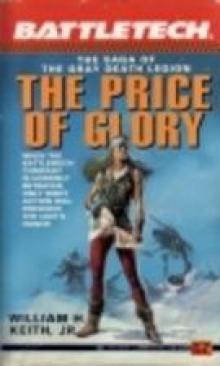 The Price of Glory
The Price of Glory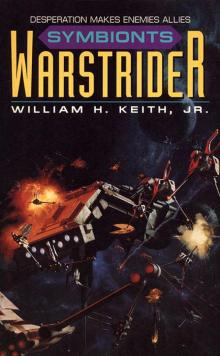 Symbionts
Symbionts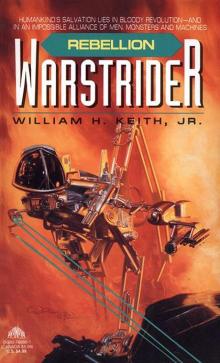 Rebellion
Rebellion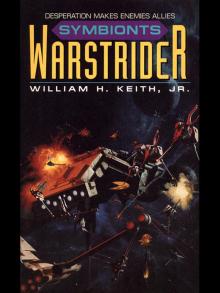 Warstrider 04 - Symbionts
Warstrider 04 - Symbionts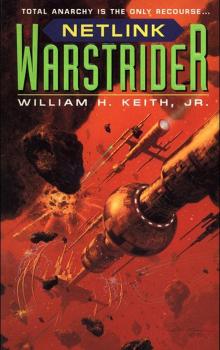 Netlink
Netlink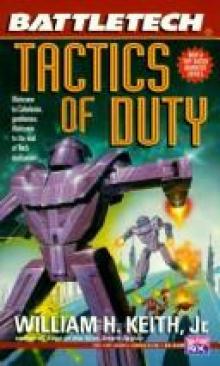 Tactics of Duty
Tactics of Duty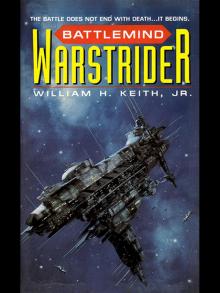 Warstrider 06 - Battlemind
Warstrider 06 - Battlemind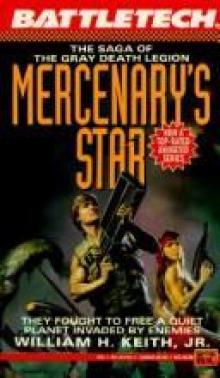 Mercenary's Star
Mercenary's Star Battlemind
Battlemind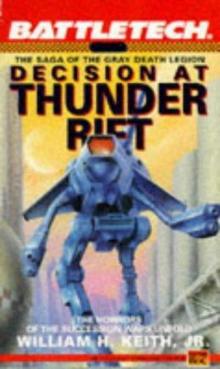 Decision at Thunder Rift
Decision at Thunder Rift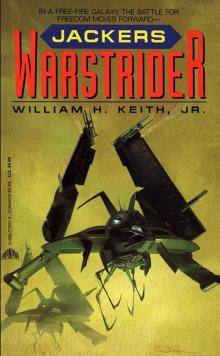 Jackers
Jackers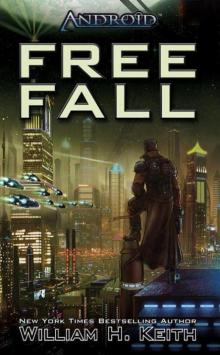 Android: Free Fall
Android: Free Fall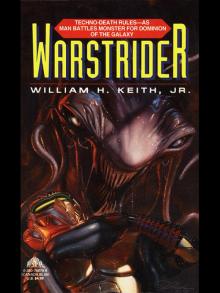 Warstrider 01 - Warstrider
Warstrider 01 - Warstrider Warstrider 05 - Netlink
Warstrider 05 - Netlink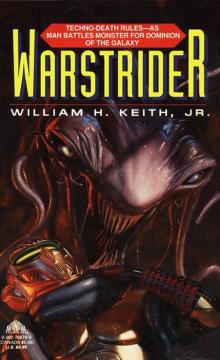 Warstrider
Warstrider